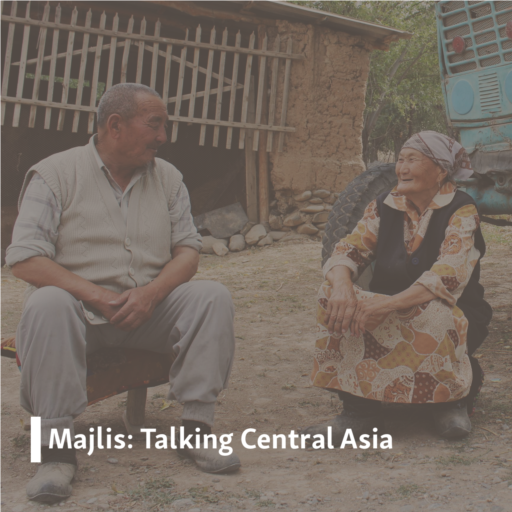In October 2018, workers in the Uzbek city of Ohangaron, 65 kilometers southeast of Tashkent, could be seen carrying out road repairs and sprucing up the city’s main thoroughfare.
They gave building facades a fresh coat of paint and arranged Potemkin storefronts for shops with little inside beyond construction materials strewn on the floor.
It was clear someone important was coming to town.
The buzz in the city was that Uzbek President Shavkat Mirziyoev was the mystery VIP -- and that he might have Russian President Vladimir Putin, who was set to arrive in Uzbekistan for an official visit, in tow.
"No one will ever officially tell us that. But there were rumors that Mirziyoev was coming on [October] 18,” a local official told RFE/RL’s Uzbek Service at the time.
The official, speaking on condition of anonymity, added that Serbian workers were “building a new residence for the president in the mountainous resort area of [the] Ohangaron [district].”
“There is a presumption that [Mirziyoev] will go there. But I think you have to get there by helicopter. Plus, there are also rumors that he will come to Ohangaron with Putin,” the official said.
The official’s claim about the resort development was accurate: A compound was indeed being built in the highlands around 30 kilometers away in an idyllic gorge in what is known as Shovvozsoy, along the banks of a mountain river of the same name.
More than two years have now passed since the complex was finished, and the Uzbek government has yet to make any details about it public.
But an investigation by RFE/RL’s Uzbek Service has uncovered substantial and credible evidence that the exclusive and secretive resort, including a newly constructed reservoir, were built for Mirziyoev’s use -- and at a price tag that multiple sources familiar with the development estimated at several hundred million dollars.
The resort, which the public is prevented from approaching by roadblocks and security personnel, is not included in a government decree on management of the Uzbek president’s official residences issued in March 2019.
But several sources said that the complex features a mansion for Mirziyoev’s use. One businessman who said he saw the interior described it as ostentatiously decorated and furnished with expensive Italian imports.
The mountain hideaway also features helicopter pads and, like several other official residences of the Uzbek president, it is covered by one of the country’s six official no-fly zones. An employee of the Uzbek Civil Aviation Agency said these zones cover “mostly presidential residences.”
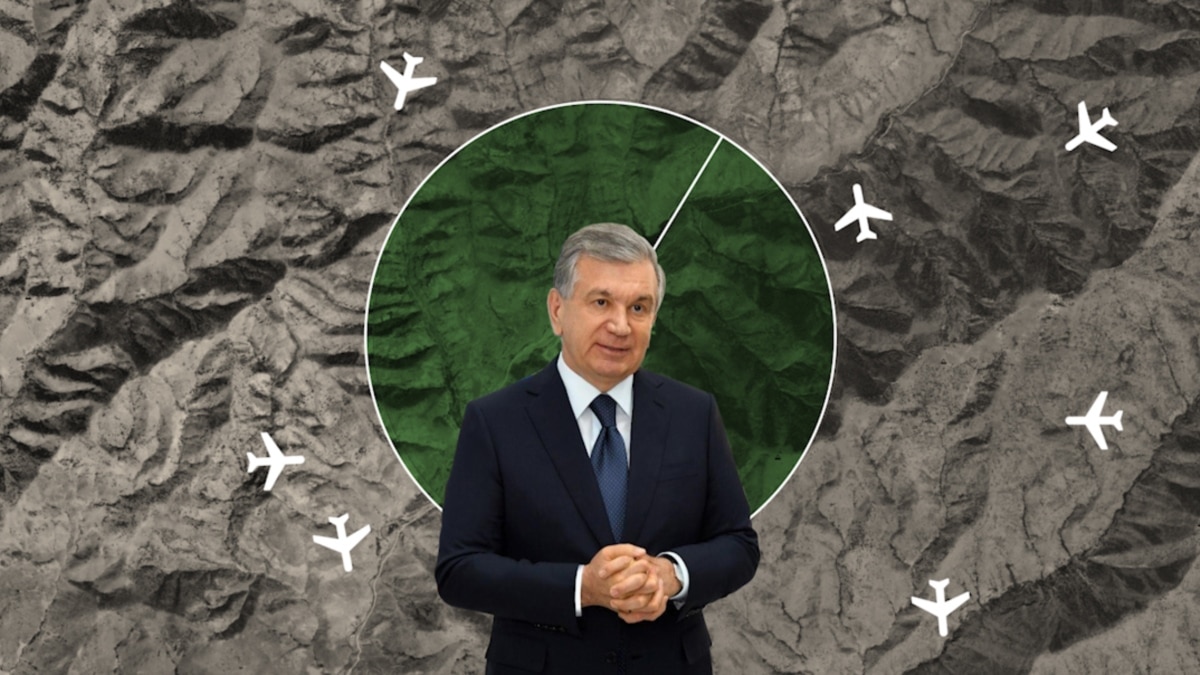
Flier Beware: Forbidden Airspace Covers Secret Uzbek Resort
A secretive mountain resort that sources say was built for Uzbek President Shavkat Mirziyoev has something in common with his other residences: It is protected by one of the country's six no-fly zones.
Highlighting the secrecy surrounding the resort, reporters were unable to find or obtain a single ground-level photograph of the complex. Several builders who worked on the site said their mobile phones were confiscated before they could enter the territory.
Construction of the compound began in February 2017, less than two months after Mirziyoev assumed the presidency, according to sources, satellite imagery, and one corporate document mentioning the development.
Presenting a contrast to the rule of his predecessor, the late authoritarian President Islam Karimov, Mirziyoev has pledged greater transparency and prudent use of taxpayers’ money since assuming the presidency in December 2016.
“We need to implement an effective decision-making system based on transparency in public administration,” Mirziyoev told lawmakers in his annual address in December 2017, adding that “transparency and accountability are important conditions for the effective formation of the state apparatus.”
But there is virtually no available information about the amount of public funds poured into the Shovvozsoy resort, which is located on a protected biosphere reserve controlled by the state railway company.
Families living in the area were uprooted and their homes razed to make room for the resort, and villagers downstream complained of water interruptions due to the reservoir built next to the complex.
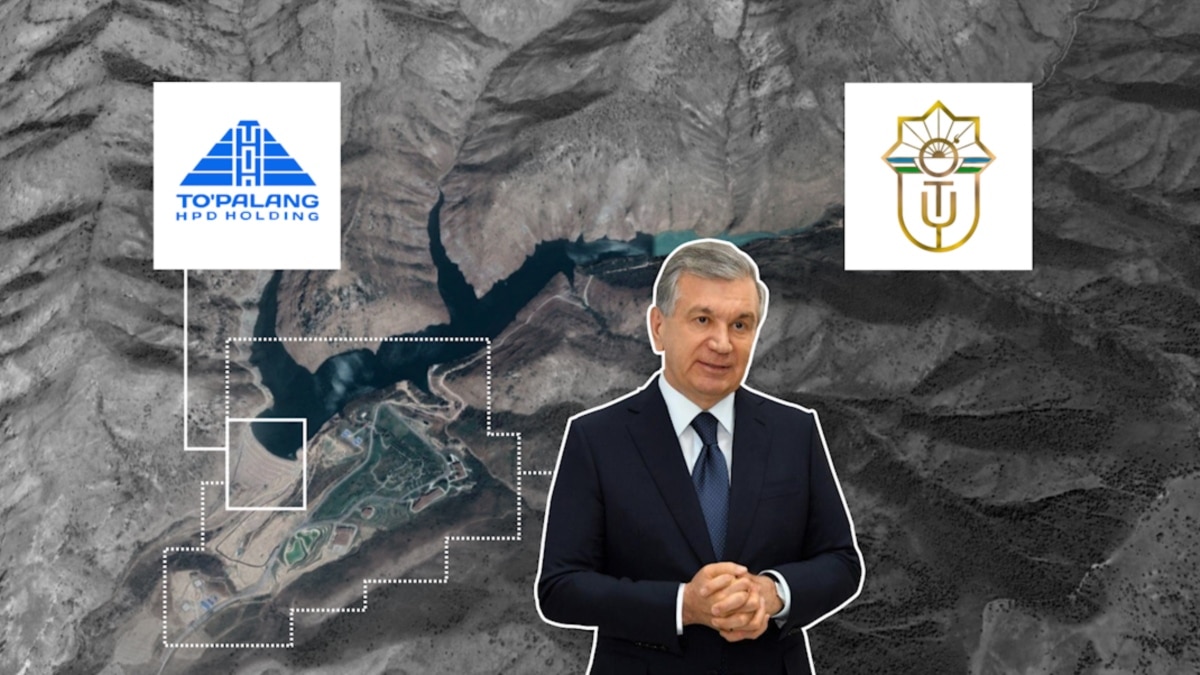
The Mysterious Presidential Reservoir That Left Uzbek Villagers Dry
There is virtually no public information about a new reservoir built next to a secret mountain compound belonging to Uzbek President Shavkat Mirziyoev, including how much it cost or what its purpose is. Villagers downstream say the reservoir's construction disrupted their water supply.
All of the sources who agreed to speak to reporters for this investigation did so on condition of anonymity, citing fears of retribution from officials or their employers for discussing the secretive mountain facility.
The secrecy and alleged luxury of the compound echo the Black Sea estate linked to Putin that featured in opposition politician Aleksei Navalny’s recent exposé -- and has helped drive protests in support of the jailed politician.
That property, located near the southern Russian resort town of Gelendzhik, has earned the moniker “Putin’s Palace.”
Locals call the secretive Uzbek compound “Mirziyoev’s dacha.”
Hunter’s Paradise
The mountain resort is located along the Shovvozsoy River, above the villages of Jartosh and Sarisuyun in the Ohangaron district of Uzbekistan’s Tashkent region. These villages and their surroundings, where mountain rivers flow, were protected during both the Soviet era and the rule of Karimov.
Locals say Soviet leaders Nikita Khrushchev and Leonid Brezhnev came to hunt in the area, commonly referred to as the Shovvozsoy forestland.
“The place had long been popular with hunting enthusiasts because of its abundance of wild boars, deer, and pheasants,” a former shepherd in the area told RFE/RL’s Uzbek Service.
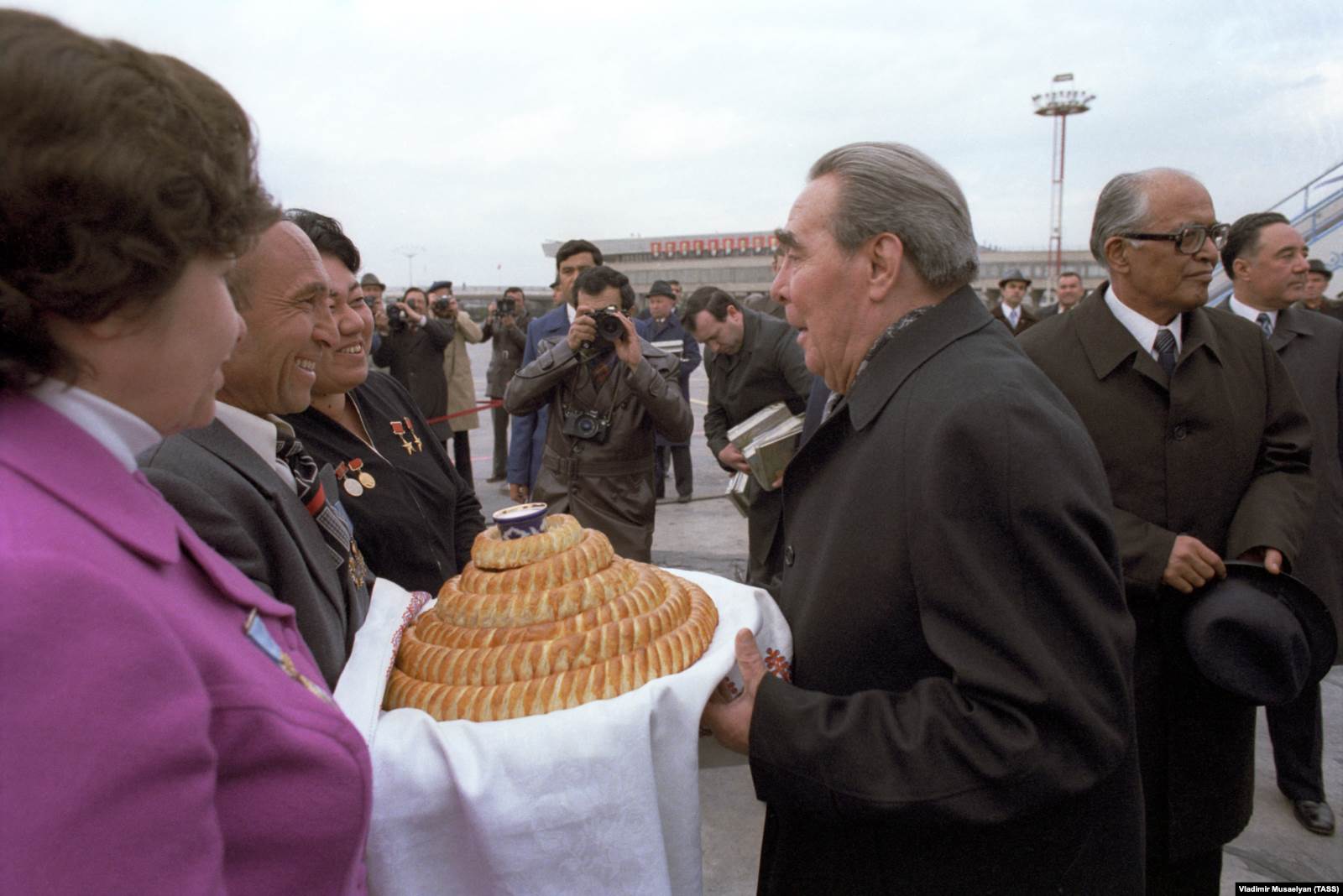
One Uzbek government official said Mirziyoev knew how beautiful and exclusive Shovvozsoy was from his time as prime minister from 2003 to 2016.
In 2010, Mirziyoev signed a decree that included the construction of a “road of state significance” to the Shovvozsoy forest.
By April 2013, local hikers were already discussing the alleged acquisition of the area by the state railway company, Uzbekistan Railways, and a roadblock preventing anyone from entering the company’s “game reserve.”
As early as August 2014, satellite imagery shows a lodge-like structure with a red roof surrounded by landscaping on the site that would later become the Shovvozsoy resort.
One government official who said he visited the lodge told RFE/RL that the head of Uzbekistan Railways at the time, Achilboy Ramatov, “took over the land” and “built a luxury hunting lodge.”
Ramatov, who became Uzbekistan’s first deputy prime minister in 2016, is known as a close associate of Mirziyoev’s and a prominent construction magnate.
"They used to inform Ramatov when the number of wild boars increased in the forest and he would come to hunt,” the official said. “It was one of Ramatov's secluded places to entertain and party with his high-ranking guests, including Mirziyoev.”
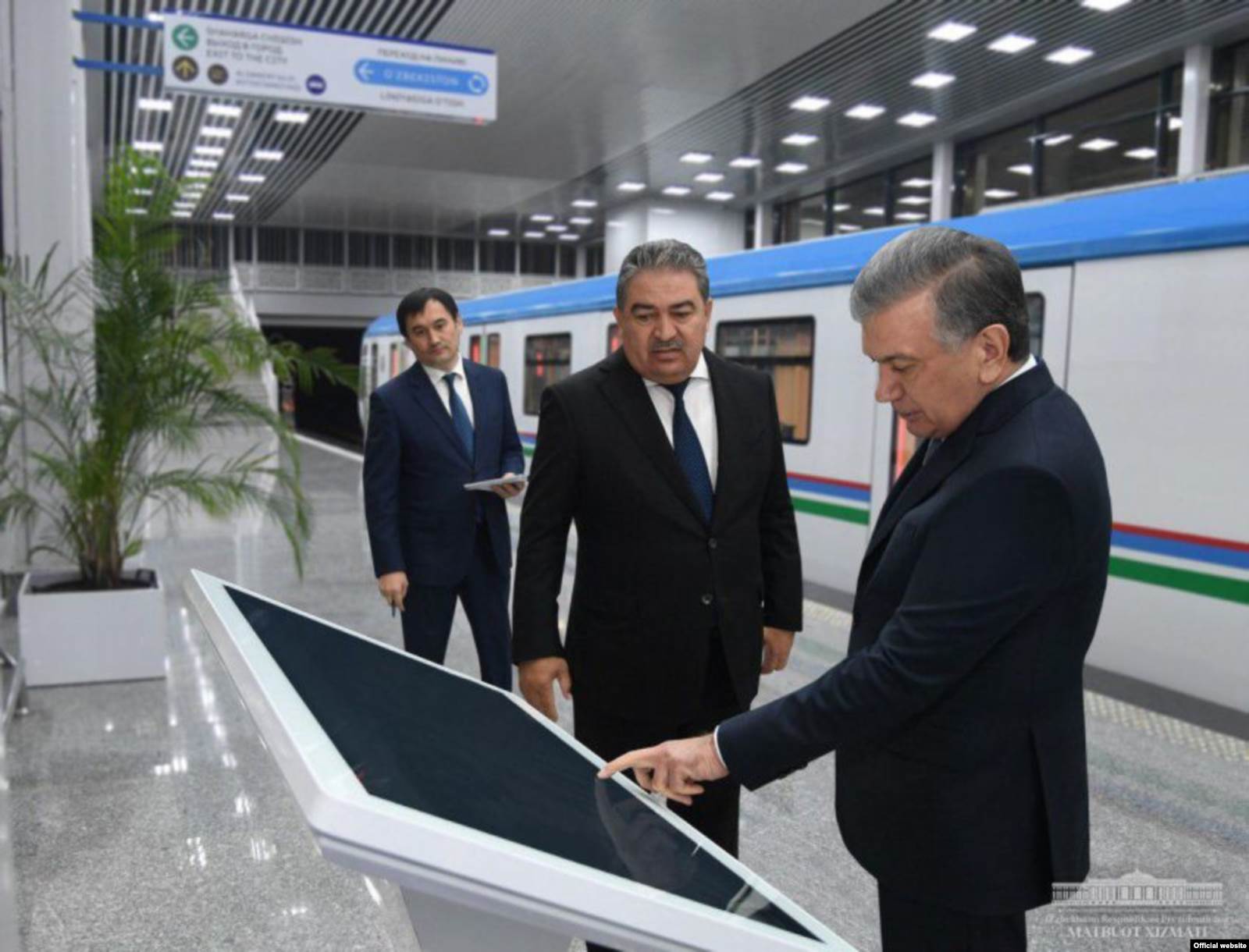
Ramatov did not respond to a request for comment. But his hunting in the area was corroborated by a woman in her 90s who complained to Mirziyoev and the Uzbek parliament in June 2017 that Ramatov and two associates were “hunting wild animals at any time and causing great damage to the natural world.”
“Who gave them such a right?” she wrote.
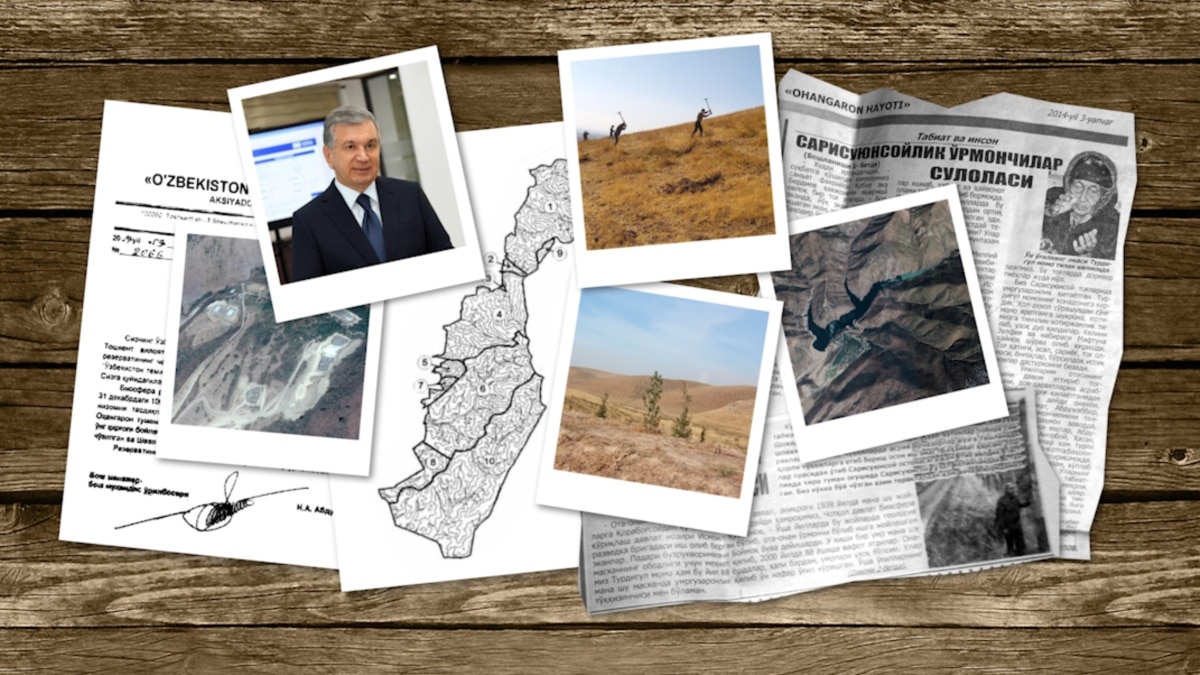
The Displaced 'Guardians' Of An Idyllic Uzbek Valley
A family in an idyllic gorge of the Uzbek highlands was known for its stewardship of the area for decades. Then came the secretive development of an exclusive resort linked to the country's president.
‘Working Day And Night’
Plans to build the secretive Shovvozsoy resort were under way as early as February 2017 -- less than a month after Mirziyoev delivered a speech to parliament stressing wise use of public funds -- according to an annual report of Boshtransloyiha, an Uzbekistan Railways subsidiary and the government’s main institute for transportation research and design.
On February 7, 2017, Boshtransloyiha agreed to conduct “topographical work” for another Uzbekistan Railways subsidiary, according to Boshtransloyiha corporate records.
The agreement was related to “construction of a recreation area on the territory of the Shovvozsoy forestland” -- one of just a handful of publicly available mentions of the resort.
Within months of the agreement, helicopter pads and other construction and landscaping work were already visible by satellite.
The following year, five months before Putin’s official visit, Prime Minister Abdulla Aripov formally decreed the creation of the Ugam-Chatkal State Biosphere Reserve, 43,000 hectares of protected land that included the site where the Shovvozsoy compound was being built. The decree placed management of the new reserve in the hands of the Ramatov-led national railways.
The decree formally appointed Ramatov as one of two managers of the reserve which includes an 11,000-hectare conservation area known as Boshqizilsoy that is part of the UNESCO-protected Western Tien-Shan.
Precisely why the state railways would be entrusted with caring for such a large territory of protected land remains unclear.
The decision raised questions from UNESCO’s World Heritage Committee, which asked the Uzbek government “to clarify the role” of the company in the protection of Boshqizilsoy and “possible impacts on the conservation of the Outstanding Universal Value” of the Western Tien-Shan.
Uzbekistan responded in part by saying that “no construction is planned on the territory of the buffer zone around the [Boshqizilsoy] site” and that there were no plans for “other activities that could affect the universal outstanding value of the property.”
Aripov established a range of permissible activities on the reserve with another decree in December 2018 stating that no development is allowed on the Boshqizilsoy section, while limited commercial activity is allowed in the one-kilometer-wide buffer zone surrounding it and in the so-called “transition zone” that makes up the rest of the biosphere reserve.
The Shovvozsoy resort is located in the transition zone, where some recreation-related development is permitted. Aripov’s December 2018 decree states that activities undertaken in the transition zone should “not harm the biosphere reserve’s natural features and ecosystems.”
By the time Aripov issued that decree, however, the Shovvozsoy resort and reservoir had already been largely built.
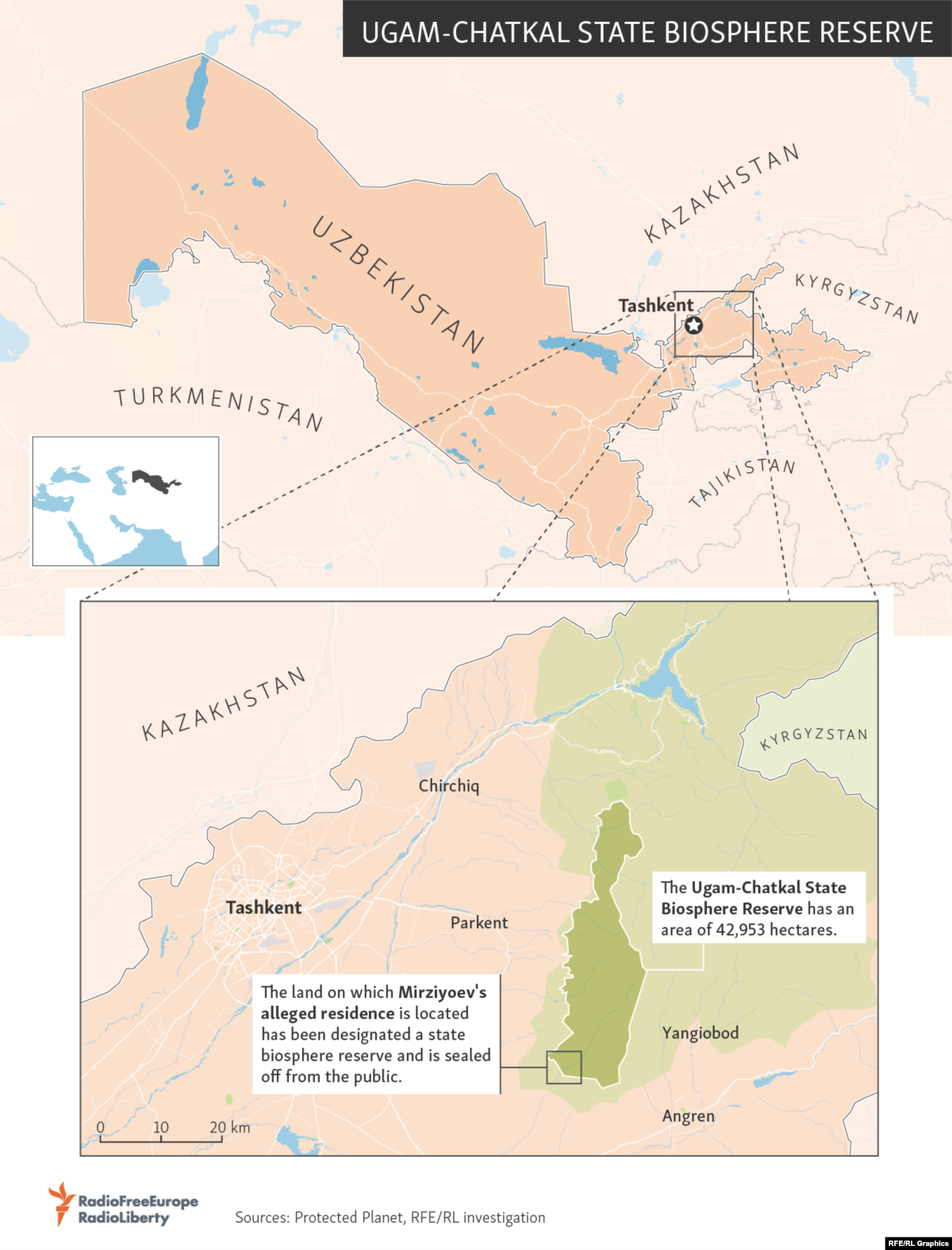
Requests for comment sent to the offices of Aripov and Mirziyoev went unanswered, as did an inquiry to Uzbekistan Railways.
According to the builders directly involved in the resort’s construction, the main part of the site was completed in 2018 at breakneck speed.
“Everybody worked day and night to finish most of the dacha before Putin arrived in Uzbekistan. Very high-level people hastened the whole process,” one worker said, mentioning by name Aripov and the Kremlin-loyal billionaire tycoon Alisher Usmanov, a native of Uzbekistan who did not respond to a request for comment.
A second source, a local official, also mentioned Usmanov, saying that “everybody in Ohangaron believes that Putin, Mirziyoev, and Alisher Usmanov flew in and out [of the Shovvozsoy resort] by helicopter.”
The Kremlin did not respond to a request for comment. Neither its site, nor Mirziyoev’s official website, mentions any visit of the two leaders to the Shovvozsoy forestland during the Russian president’s official visit in October 2018.
Murky Financing And Italian Luxury
Precisely how much public money was poured into Mirziyoev’s mountain compound remains unclear. Reporters were only able to find a handful of publicly available financial records identifying the project by name, and those documents accounted for only around $544,000.
Uzbekistan Railways has never publicly disclosed the amount of money that was spent on the Shovvozsoy compound, and reporters found only one instance in which the state-owned company mentioned its existence.
In July 2018, as the reservoir at the site was being filled, the company announced a tender “for the delivery of materials for construction of a recreation facility on the territory of the Shovvozsoy forestland.”

The Mysterious Presidential Reservoir That Left Uzbek Villagers Dry
There is virtually no public information about a new reservoir built next to a secret mountain compound belonging to Uzbek President Shavkat Mirziyoev, including how much it cost or what its purpose is. Villagers downstream say the reservoir's construction disrupted their water supply.
A search of the company’s website yielded no other mention of the project, and its annual reports and business plans for 2017-19 do not mention it either.
During that period, the company spent $1.5 billion on construction and repair work, $1.1 billion of which was spent on new construction, according to the annual reports. It received $374.7 million in international loans during the same period, the reports state.
The annual reports for this period also list a total of $301.8 million in “other expenses.”
It is unclear if the financing of the Shovvozsoy resort is included in these figures. Uzbekistan Railways did not respond to a request for comment.
Reporters were able to identify a total of six companies, all state-owned entities, involved in contracts referencing development of the Shovvozsoy compound in 2017-18: Uzbekistan Railways and its subsidiary, Toshtemiryolloyiha; Qishloqenergoloyiha, which designs facilities for electricity and the electrification of rural areas; Boshtransloyiha, the government’s institute for transportation research and design; Tashkent Regional Electric Networks; and HydroProject, which is controlled by state-owned UzbekHydroEnergo.
The Publicly Available Contracts
Qishloqenergoloyiha’s 2018 annual report states that it signed seven contracts totalling 1.4 billion Uzbek soms ($178,000 at the time) with Tashkent Regional Electric Networks Enterprise for the provision of power to a residential complex and helipad in the Shovvozsoy forest.
According to Boshtransloyiha’s 2018 annual report, its design and survey work at the resort continued until November 2018. The report lists a total of eight contracts for the project with Uzbekistan Railways and its subsidiary, Toshtemiryolloyiha, totalling 2.5 billion Uzbek soms ($361,200 at the time). Four of these are listed as “supplemental” contracts, though reporters could find no information about the main contract they were related to.
Boshtransloyiha records also show that the company signed an August 2017 contract worth 29.3 million Uzbek soms ($7,000 at the time) with the state-owned company HydroProject for a calculation of the slope stability at the Shovvozsoy site.
One Tashkent official aware of the project said it likely cost “at least several hundred million dollars” to build the resort. A foreman who worked on the site, meanwhile, believes construction of the compound and reservoir cost at least $1 billion.
Those estimates include the construction of the reservoir, roads, landscaping, and the large buildings on the property, including the mansion allegedly built for Mirizyoev’s use.
“We saw for ourselves how expensive and plentiful the materials were, from digging mountain roads to designing the landscape. Starting from a huge amount of exclusive marble and ending with ornamental plants that were brought from abroad. And we haven’t seen another expensive part of the compound -- its luxurious interior,” the construction source said.
One Uzbek entrepreneur who said he saw the interior of what sources identified as Mirziyoev’s residence at the resort said it was replete with golden detailing and “custom-made furniture directly from Italy.”
According to trade data, Italian furniture exports to Uzbekistan soared in 2018 -- the year that workers said the Shovvozsoy resort was largely completed -- compared to the previous year.
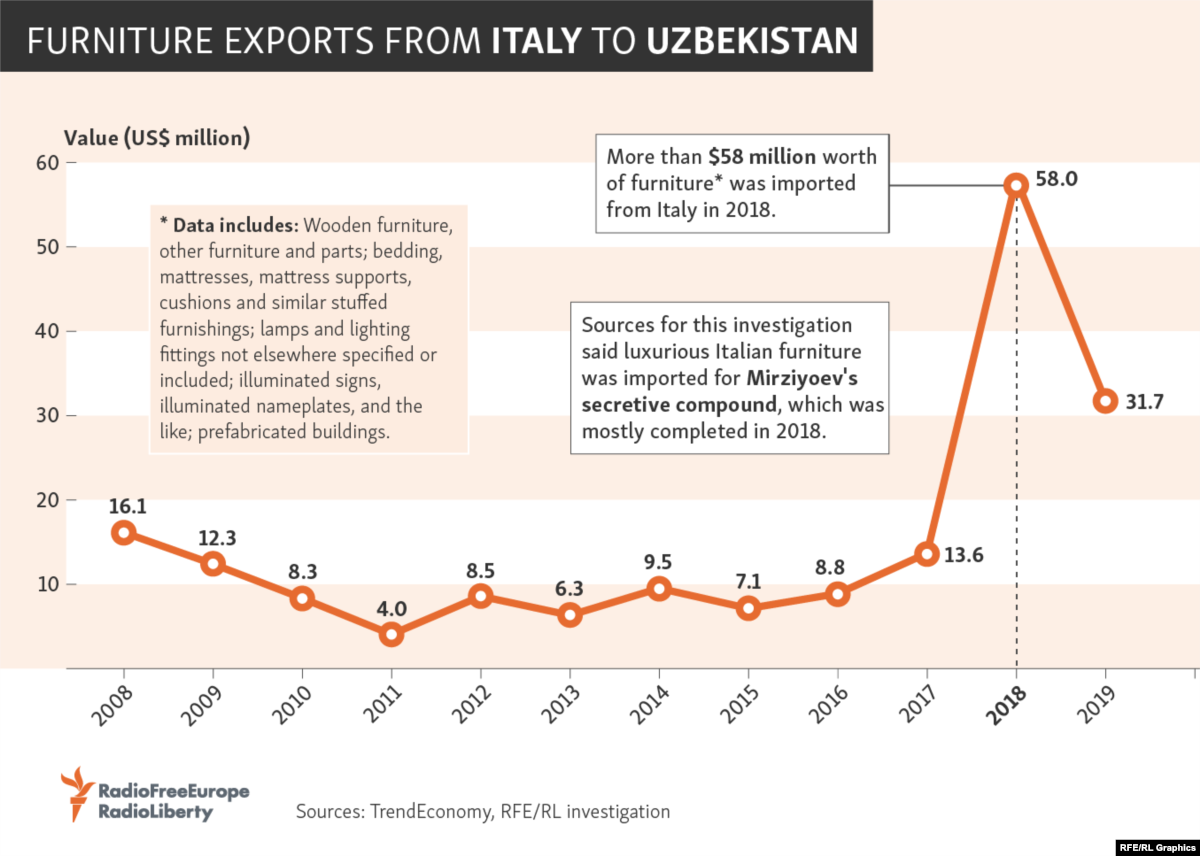
It’s impossible to tell from this data how much -- if any -- of the Italian furniture was imported for the Shovvozsoy resort. The data does not indicate the names of the Italian companies that exported the furniture or the recipients in Uzbekistan.
Aleksei Navalny’s bombshell expose of “Putin’s Palace” on Russia’s Black Sea coast also alleged that the property was furnished with luxury Italian furniture. One of the Italian furniture companies mentioned in his investigation, Pozzoli, confirmed that it has exported its products to Uzbekistan but declined to give further details.
According to a state employee who said he visited the site during the final stage of construction, a "little Austria" was built there, with facilities that allegedly include ski slopes, swimming pools, saunas, a gym, a cinema, vineyards, an amphitheater, and “vast ornamental landscaping.”
Reporters were unable to corroborate these details, though satellite imagery showed substantial landscaping work at the site.
Satellite imagery also corroborates the timeline given by several builders who worked on the site and said construction there began even before the design and planning documents were finalized.
“A new, much wider road had to be built in order to accommodate all the heavy traffic, and many detonations were carried out in the mountains to open the road,” a builder who worked directly on the site told RFE/RL’s Uzbek Service.
Another source involved in the construction said German architects were brought in, as were companies from Russia, the Balkans, and other countries.
He said that communications infrastructure, as well as electrical and ventilation work, was primarily done by Enter Engineering, a Singapore-incorporated firm owned by Uzbek businessman Bakhtiyor Fozilov, who received a state award from Mirziyoev in 2019 for “selfless service.” (One individual’s online resume states that he worked on the Shovvozsoy resort for Enter Engineering.)
He said that concrete and steel structures were provided by Binokor Temir-Beton Servis, an Uzbek subsidiary of Orient Group, whose shareholders include Oybek Umarov, the brother of Mirziyoev’s son-in-law. Other subsidiaries of Orient Group were involved in the construction of the resort as well, he said.
“More than 2,000 workers were employed during the early stage of construction, when heavy and dirty work was done. Most of the workers were hired from [Uzbekistan’s] Qashqadaryo [region] and they lived in temporary containers built on the construction site,” the construction worker said, adding that they worked “from dawn to dusk.”
One Russian company states on its website that it worked on the “construction of a recreation facility on the Shovvozsoy forest territory.” The company, BrigEnergo, is based in the Russian city of Ufa and has done other work in Uzbekistan. It says that its other customers include Enter Engineering, the company cited by the construction worker as a contractor on the project.
Inquiries to Enter Engineering, Orient Group, and BrigEnergo about the Shovvozsoy resort went unanswered.
A Bird’s-Eye View
Historical satellite images show the progression of the project and its scope.
As early as July 22, 2017, two blue helicopter pads were visible in front of what sources described as Ramatov’s lodge. (Other satellite imagery indicates preparations for the helicopter pads were under way as of January 1 of that year.) Two people who worked on the site said that Mirziyoev was a frequent visitor during construction.
Within a year, a significant portion of the project appeared to have been completed, including the largest building on the site.
Several people who worked on the construction site said the Mirziyoev family residence at the Shovvozsoy facility is located next to the main building.
The facility also includes smaller residences for Mirziyoev’s security detail and private guests, several sources said.
Down the road toward Tashkent are buildings that construction workers say house National Guard soldiers as well as a soccer field put in sometime after August 2017.
“Since this zone is special and secret, it’s guarded 24/7. [One] can see even from the satellite that the [checkpoint] is standing in front of the National Guard buildings. That is the final checkpoint before you enter the premises of the dacha. Not even a bird can fly over that fence,” a builder directly involved in the construction said.
“No one is allowed to enter this zone with phones. That’s how they managed to keep the construction secret,” he added.
Don’t ‘Oppose The President’
Within six months after the reservoir next to the Shovvozsoy resort was filled, Prime Minister Abdulla Aripov issued his decree regulating the biosphere reserve on which the compound is located. The decree, in part, established protection of the reserve by security personnel.
It also allows them to carry weapons while on duty, check documents of those on the territory of the reserve, and conduct inspections of people and vehicles.
“Since 2018, the road to the top has been closed to ordinary people. Security around the dacha is so strong that it is impossible to approach it from dozens of kilometers. Our pastures were fenced with barbed wire. If our cattle manage to pass the barbed wire somewhere, they impose a huge fine on us. Armed guards are everywhere,” a local shepherd told RFE/RL’s Uzbek Service.
Some licensed local hunters told RFE/RL that they had received an official response to their complaints that the Shovvozsoy forestland area had been taken over for use by the state.
One of the hunters said that those who protested were warned "not to go against big politics, not to oppose the president."
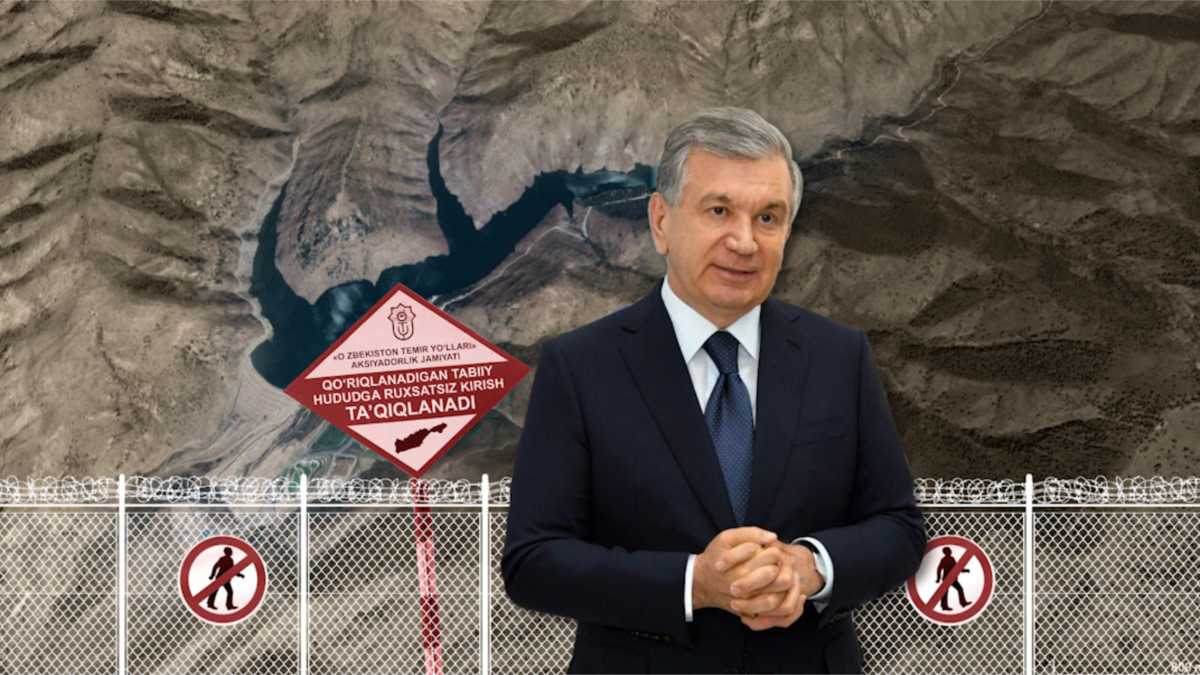
The Uzbek President's Secret Mountain Hideaway
An opaquely financed resort, including a new reservoir, was built in the Uzbek highlands and is protected by guards and a no-fly zone. A new investigation reveals its links to President Shavkat Mirziyoev, who has spoken publicly about the need for government transparency.
